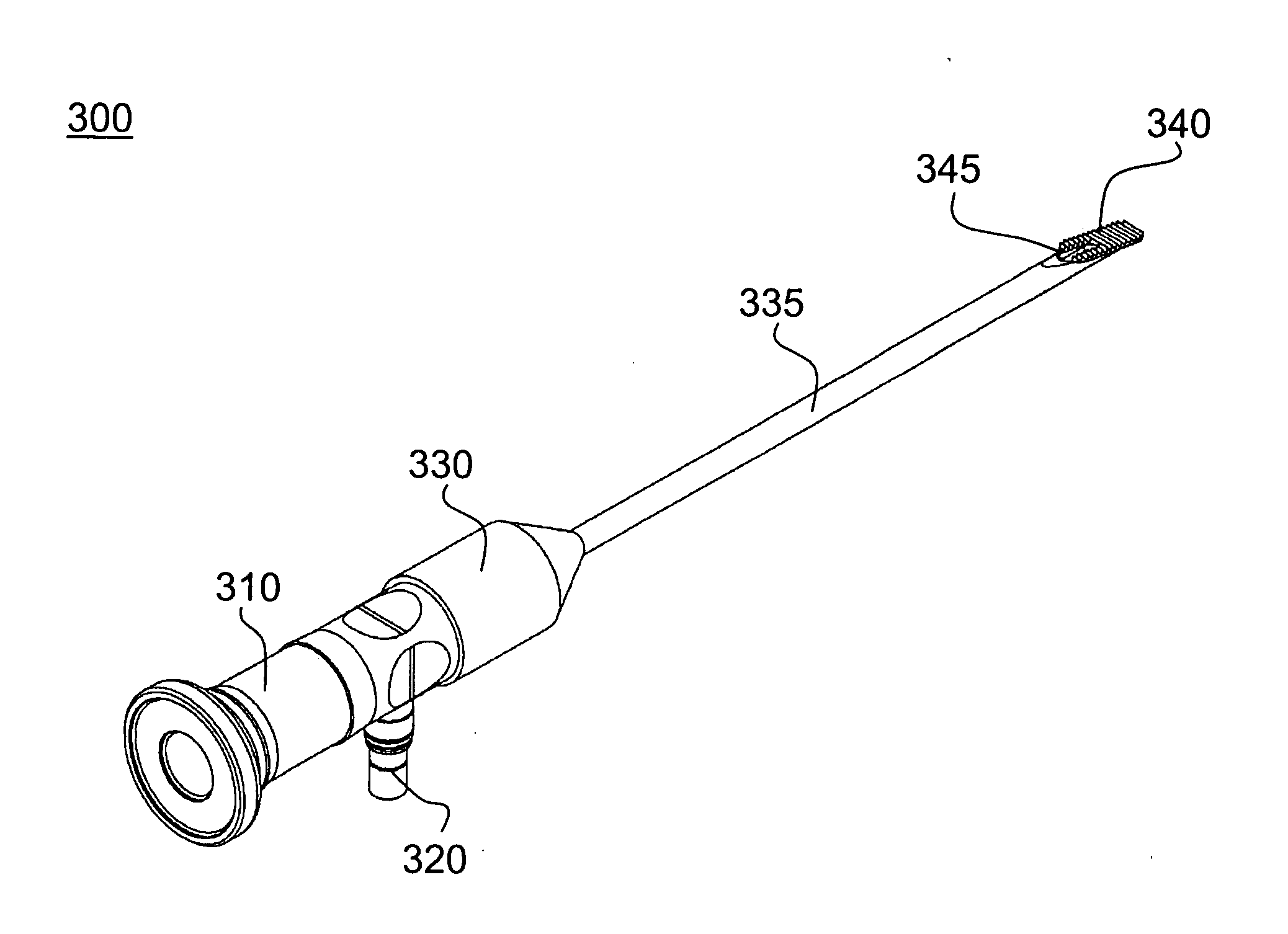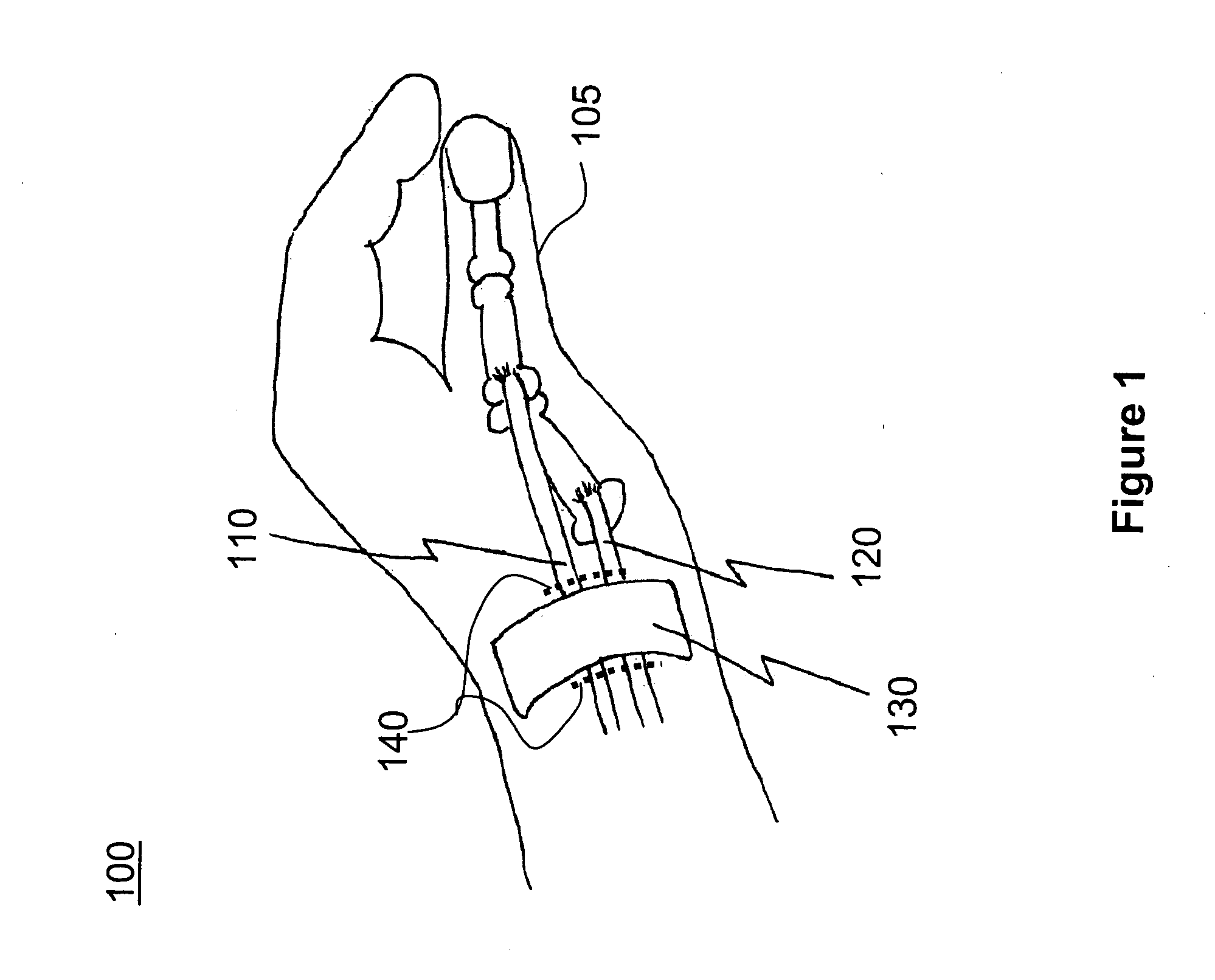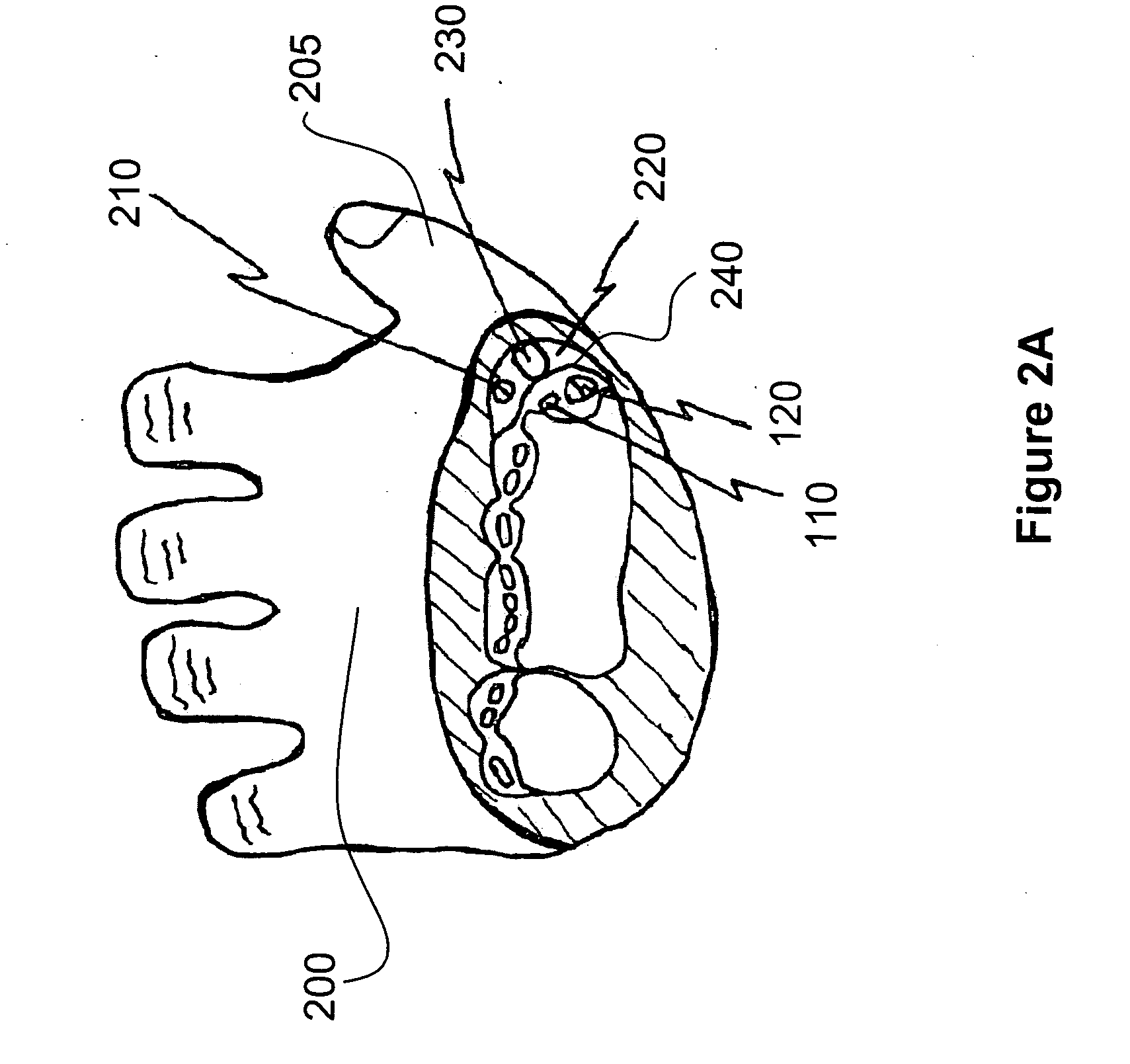Apparatus and method for releasing tendon sheath
a tendon sheath and appendix technology, applied in the field of releasing tendon sheaths, can solve the problems of radial nerve branch, local tissues begin to swell, and local tissues begin to swell, and achieve the effect of reliable and routine release of tendon sheaths
- Summary
- Abstract
- Description
- Claims
- Application Information
AI Technical Summary
Benefits of technology
Problems solved by technology
Method used
Image
Examples
Embodiment Construction
[0024] Referring now to the drawings, and more particularly to FIG. 1, there is shown a schematic drawing of hand 100, with particular attention to the thumb 105 and the two thumb tendons, the abductor pollicis longus (APL) 120 and extensor pollicis brevis (EPB) 110 tendons. Also shown is a portion of the upper side 130 of the sheath (the extensor retinaculum) holding the thumb tendons in place as they pass from the radius bone of the forearm along the inside edge of the wrist. The object of the instrument combination described herein and the methodology for using the instruments is to release the sheath 130 by cutting across the sheath between the two dotted lines 140.
[0025] An incision is made on the proximal or distal side of the sheath 130 and, after dissection down to the sheath 130 and then dissection across the sheath to create a pocket above the first dorsal compartment, a rasp tool is used to clear the tissue that adheres to the surface of the first dorsal compartment.
[00...
PUM
 Login to View More
Login to View More Abstract
Description
Claims
Application Information
 Login to View More
Login to View More - R&D
- Intellectual Property
- Life Sciences
- Materials
- Tech Scout
- Unparalleled Data Quality
- Higher Quality Content
- 60% Fewer Hallucinations
Browse by: Latest US Patents, China's latest patents, Technical Efficacy Thesaurus, Application Domain, Technology Topic, Popular Technical Reports.
© 2025 PatSnap. All rights reserved.Legal|Privacy policy|Modern Slavery Act Transparency Statement|Sitemap|About US| Contact US: help@patsnap.com



